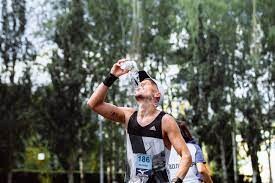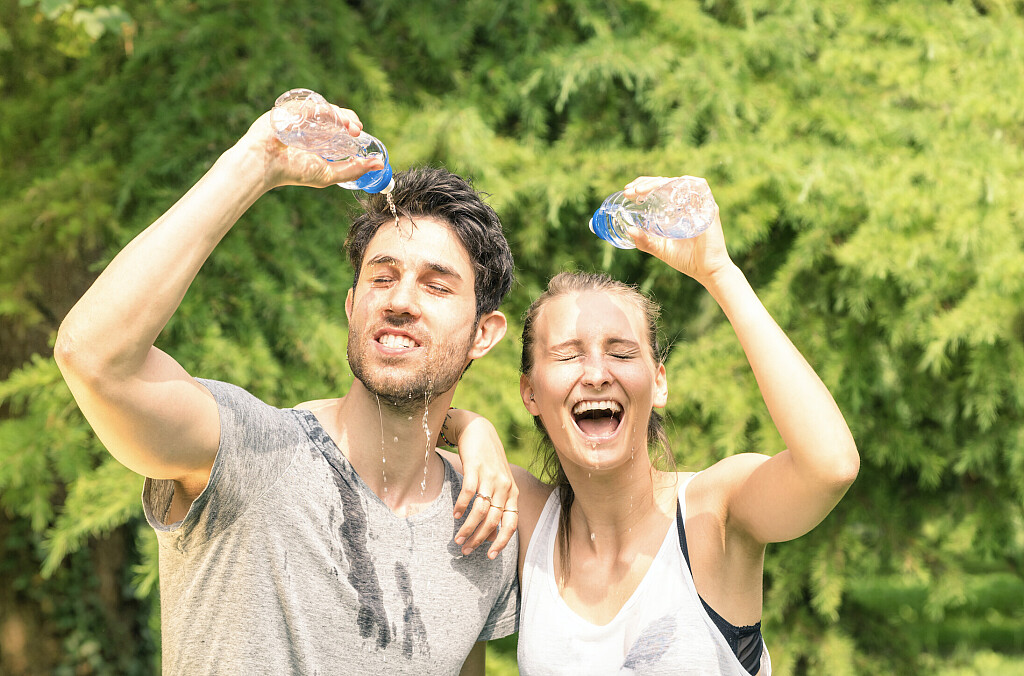Running News Daily
Running News Daily is edited by Bob Anderson. Send your news items to bob@mybestruns.com Advertising opportunities available. Train the Kenyan Way at KATA Kenya and Portugal owned and operated by Bob Anderson. Be sure to catch our movie A Long Run the movie KATA Running Camps and KATA Potato Farms - 31 now open in Kenya! https://kata.ke/
Index to Daily Posts · Sign Up For Updates · Run The World Feed
These adjustments can help you maximize your workouts when the temperature rises.
Scorching weather awaits on the summer calendar. If you’re a runner, so do many training miles.
Workouts when the temperature climbs can put additional – and even dangerous – stress on your body. Heat illnesses that can develop during exercise in the sizzling outdoors include heat cramps, heat exhaustion and heat stroke.
Hot and humid weather warrants caution and recalibration for runners looking to maintain their fitness routine, says exercise physiologist Katie Lawton, MEd. Here are some tips to stay safe while keeping to your training schedule.
Best times to run when it’s hot

The coolest part of the day typically occurs around sunrise, so rising before dawn to run works as an ideal solution to beat the heat. (Not a morning person? Read what a psychologist and behavioral sleep medicine specialist recommends to shift your circadian rhythm.)
Evening runs also offer a bit of a respite from the heat, even if the temperatures don’t dip as low as in the a.m. hours.
Either time slot offers more ideal running conditions than midday, when daily temperatures crest and the sun punishes those moving below. “Some people can do it,” Lawton says, “but you won’t find me running at 1 p.m.”
What to wear running in the heat

There’s an outfit for every occasion, including a 5-miler under the summer sun. Running shirts and shorts for a hot day should be:
Loose-fitting or vented to allow air to pass over and cool your skin.
Made of a moisture-wicking fabric (typically polyester-based) to aid the evaporation process. Avoid cotton garments, which quickly turn into heavy, wet apparel that trap heat against your body.
Light-colored, as dark hues absorb the sun’s heat.
Runners also may want to invest in a lightweight, moisture-wicking hat, visor or headband to absorb sweat and cool their head. Sunglasses to protect your eyes from the sun’s harmful UV rays are recommended, too.
Find shaded running routes when it’s hot
Pavement absorbs heat, making streets and sidewalks akin to a frying pan above a stovetop flame. (That helps explain the countless YouTube videos of people trying to cook an egg on sun-baked walkways.)
The lesson here is to shift your runs away from these inadvisable cooking surfaces to park trails, where miles of natural track await beneath a cool, leafy canopy.
Should you run as fast in the heat?
Running on a blistering hot day brings a definite physiological response. Your heart rate spikes as your body works to combat the effects of overheating. This survival mode instinct diverts energy away from muscles to focus on cooling.
Every sweaty step will take more effort as fatigue builds – and that will be reflected in your pace. For every 5-degree increase above 60 degrees, the typical runner can expect to slow 20 to 30 seconds per mile.
The impact can be even greater as the seasons change and runners acclimated to the cold suddenly face warmer temperatures. You should anticipate an adjustment period of one to two weeks to feel comfortable.
On the hottest days, Lawton suggests that you should ignore your pace-tracking GPS watch and run more by effort: “It’s a mindset adjustment,” she says. “Go by how you feel.”
How much to drink before and after hot weather runs
Runners don’t just drip sweat when the weather heats up. They gush it. The mass loss of fluid can lead to dehydration if you don’t take proper steps before and after your workout.
Make sure to drink 16-20 ounces of water or sports drink a few hours ahead of any training run or race, Lawton says. Top that off by downing another 8-12 ounces within 15 minutes of the activity.
Plan on drinking fluids during any run lasting longer than an hour. Lawton said a good rule of thumb is to try to consume 3-5 ounces of liquid every 30 minutes of exertion. Carry drinks on longer runs or arrange routes with access to water fountains.
Afterward, rehydrate with at least 16 ounces of fluid for every pound that melted off in sweat during the workout. Sports drinks can help restore electrolytes. Chocolate milk, juice or fruit smoothies also are excellent options. Water is always good, too.
Monitor the color of your urine to determine whether you’re properly hydrated. If it’s not pale yellow or clear, drink more fluids.
Warning signs to watch for when running in the heat
It’s important to listen to your body if you’re struggling during a run in the sun, says Lawton. More importantly, don’t ignore them. Stop your workout, get out of the heat and focus on cooling your body down if you experience symptoms such as:
Cramps or muscle spasms.
Dizziness or fainting.
A headache.
Extreme fatigue.
Skin that feels cold and clammy or hot and dry.
Be flexible with summer running plans
Don’t force a run when the weather or your body dictate a different approach, says Lawton. Consider cutting a long run in half or replacing a planned run with a cross-training activity, such as swimming or lifting weights.
If possible, use the weather forecast to plan your weekly run and schedule rest days or other activities on the hottest days.
“With the right planning and approach, runners can get their miles in throughout the summer,” says Lawton. “Be cautious, though, and don’t push it.”
by Health Essentials
Login to leave a comment




